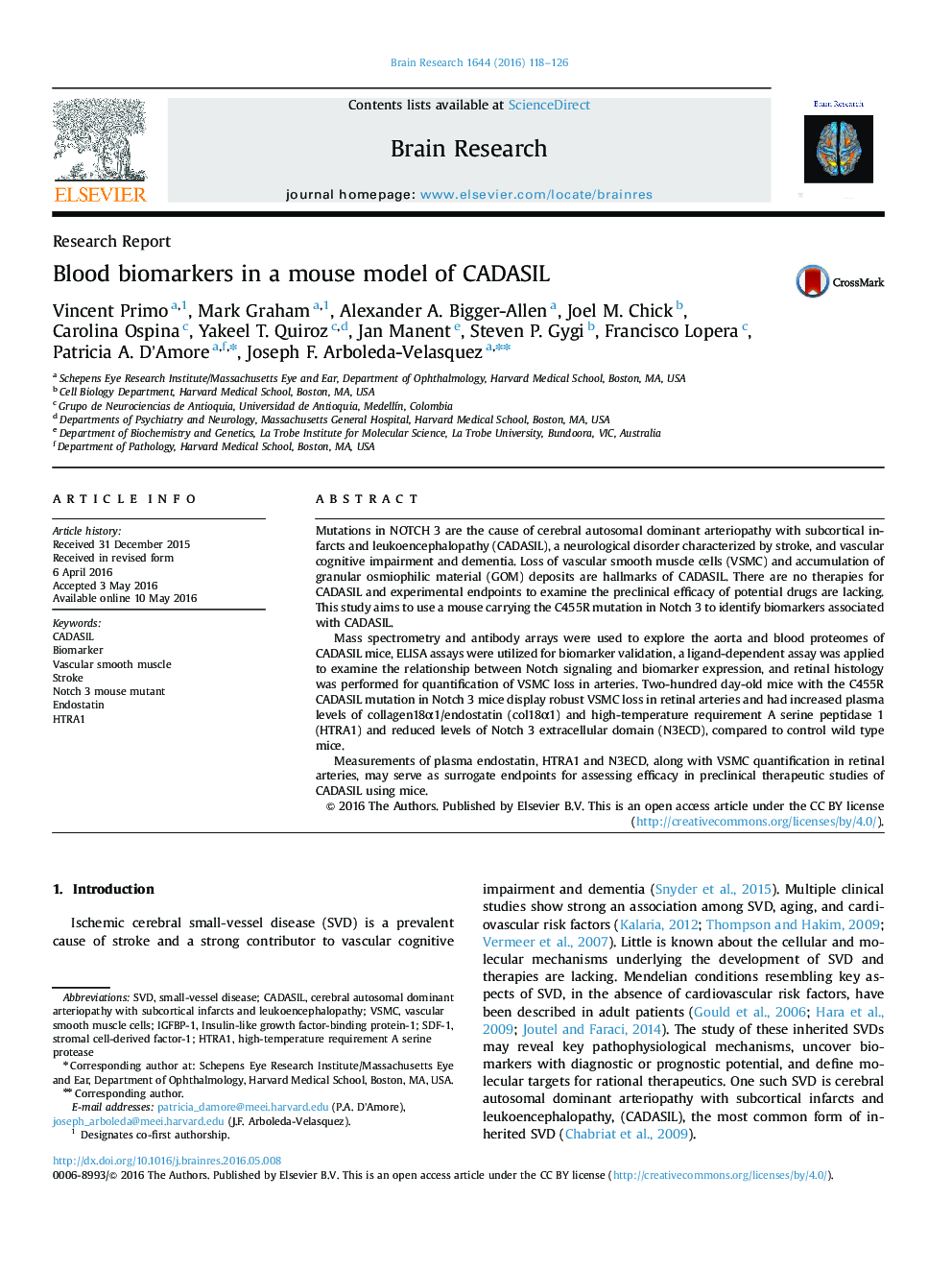| کد مقاله | کد نشریه | سال انتشار | مقاله انگلیسی | نسخه تمام متن |
|---|---|---|---|---|
| 6262462 | 1613798 | 2016 | 9 صفحه PDF | دانلود رایگان |

- Notch 3, endostatin, and HTRA1 are potential blood biomarkers for CADASIL in mice.
- CADASIL mice show a robust loss of vascular smooth muscle cells in the retina.
- An ELISA optimized for the human Notch 3 ectodomain is designed and can be applied to human samples.
Mutations in NOTCH 3 are the cause of cerebral autosomal dominant arteriopathy with subcortical infarcts and leukoencephalopathy (CADASIL), a neurological disorder characterized by stroke, and vascular cognitive impairment and dementia. Loss of vascular smooth muscle cells (VSMC) and accumulation of granular osmiophilic material (GOM) deposits are hallmarks of CADASIL. There are no therapies for CADASIL and experimental endpoints to examine the preclinical efficacy of potential drugs are lacking. This study aims to use a mouse carrying the C455R mutation in Notch 3 to identify biomarkers associated with CADASIL.Mass spectrometry and antibody arrays were used to explore the aorta and blood proteomes of CADASIL mice, ELISA assays were utilized for biomarker validation, a ligand-dependent assay was applied to examine the relationship between Notch signaling and biomarker expression, and retinal histology was performed for quantification of VSMC loss in arteries. Two-hundred day-old mice with the C455R CADASIL mutation in Notch 3 mice display robust VSMC loss in retinal arteries and had increased plasma levels of collagen18α1/endostatin (col18α1) and high-temperature requirement A serine peptidase 1 (HTRA1) and reduced levels of Notch 3 extracellular domain (N3ECD), compared to control wild type mice.Measurements of plasma endostatin, HTRA1 and N3ECD, along with VSMC quantification in retinal arteries, may serve as surrogate endpoints for assessing efficacy in preclinical therapeutic studies of CADASIL using mice.
Journal: Brain Research - Volume 1644, 1 August 2016, Pages 118-126